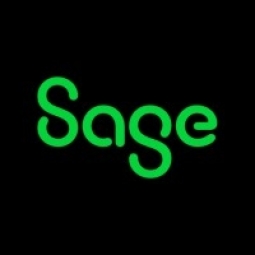公司规模
Large Corporate
地区
- America
国家
- United States
产品
- Sage ERP X3
技术栈
- ERP
实施规模
- Enterprise-wide Deployment
影响指标
- Productivity Improvements
- Cost Savings
技术
- 功能应用 - 企业资源规划系统 (ERP)
适用功能
- 物流运输
- 销售与市场营销
用例
- 供应链可见性(SCV)
- 库存管理
服务
- 系统集成
- 培训
关于客户
Russell Sigler, Inc. 是一家领先的供暖和空调产品批发商。该公司总部位于亚利桑那州菲尼克斯,在西南部和加利福尼亚州设有 35 个分支机构。Russell Sigler, Inc. 分销 Carrier 和 Bryant 产品线,为承包商提供安装和维护优质商用和住宅空调和供暖系统所需的所有设备、零件和用品。该公司一直在扩大业务并提高其在市场上的份额。
挑战
Russell Sigler, Inc. 是一家领先的供暖和空调产品批发商,面临着管理其不断增长的业务和提高市场占有率的挑战。该公司正在进行大规模扩张,收入和员工数量增加了一倍多,并增加了 25 个新地点。该公司需要一个强大、可扩展的解决方案,可以处理其繁忙的分销业务的各个方面,包括供应链管理、预测工具和销售点功能。该公司的多站点环境带来了战略挑战,因为从供需角度来看,所有分支机构都紧密交织在一起。该公司不断在站点之间转移库存,以帮助满足当地客户的需求,因此一个分支机构从另一个分支机构的库存中抽取库存是很常见的。
解决方案
经过全面的选择过程(包括对 JD Edwards 和 NxTrend 的评估),该公司于 2004 年实施了 Sage ERP X3。Sage ERP X3 基于高度可扩展且灵活的平台提供供应链管理、预测工具和销售点功能。该软件可以轻松处理三倍的地点和两倍的用户数量,且不会中断。强大的库存管理工具优化了供应链。该公司和 Sage 构建了重要的业务特定功能,包括供应商索赔功能。这是 Russell Sigler 业务不可或缺的一部分,使该公司能够针对以特定成本/价格条件出售给特定客户的产品索取回扣。凭借其灵活、强大的开发工具集,Sage ERP X3 可以轻松容纳这一增值组件,并消除了耗时且容易出错的手动索赔跟踪和开票。
运营影响
数量效益

Case Study missing?
Start adding your own!
Register with your work email and create a new case study profile for your business.
相关案例.

Case Study
Remote Temperature Monitoring of Perishable Goods Saves Money
RMONI was facing temperature monitoring challenges in a cold chain business. A cold chain must be established and maintained to ensure goods have been properly refrigerated during every step of the process, making temperature monitoring a critical business function. Manual registration practice can be very costly, labor intensive and prone to mistakes.

Case Study
Hospital Inventory Management
The hospital supply chain team is responsible for ensuring that the right medical supplies are readily available to clinicians when and where needed, and to do so in the most efficient manner possible. However, many of the systems and processes in use at the cancer center for supply chain management were not best suited to support these goals. Barcoding technology, a commonly used method for inventory management of medical supplies, is labor intensive, time consuming, does not provide real-time visibility into inventory levels and can be prone to error. Consequently, the lack of accurate and real-time visibility into inventory levels across multiple supply rooms in multiple hospital facilities creates additional inefficiency in the system causing over-ordering, hoarding, and wasted supplies. Other sources of waste and cost were also identified as candidates for improvement. Existing systems and processes did not provide adequate security for high-cost inventory within the hospital, which was another driver of cost. A lack of visibility into expiration dates for supplies resulted in supplies being wasted due to past expiry dates. Storage of supplies was also a key consideration given the location of the cancer center’s facilities in a dense urban setting, where space is always at a premium. In order to address the challenges outlined above, the hospital sought a solution that would provide real-time inventory information with high levels of accuracy, reduce the level of manual effort required and enable data driven decision making to ensure that the right supplies were readily available to clinicians in the right location at the right time.











